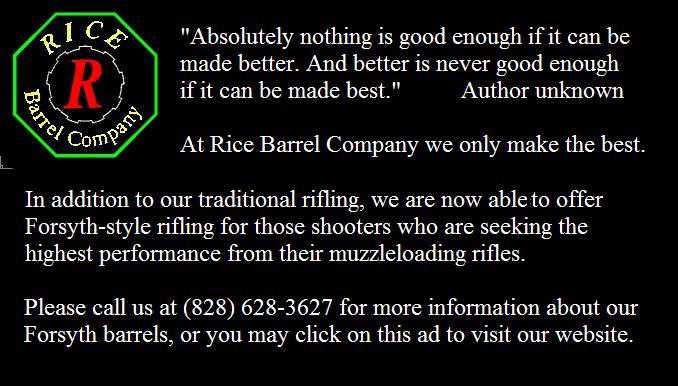Through the years of writing this blog I have always tried
to encourage you readers to design and build your own underhammer arms. While
many of you may feel that you just don’t have the skill or machinery or ideas
to build, some of you have risen to the challenge and have made some rather
interesting underhammers which you have been so kind to share with me. Some of
them were rather crude and not well thought out before starting the work, while
others were better examples of careful planning before starting the building
process.
I would like to share with you some work from one of our
readers, Robert Bradley. Unlike some builders who start with a ready made
underhammer action, Robert decided to build an action of his own design. He’s a
machinist who enjoys tinkering with guns and states that it was pictures of
underhammer guns in books at the library that inspired him to try his hand at
building one of his own.
 |
| The Bradley Boot Pistol |
Although he is a machinist, Robert does not have access to much
machine shop equipment. So, his design had to be simple enough for him to build
without the advantage of the precision machinery that many people believe is
necessary in order to fabricate an underhammer. He did most of the work with
hand tools.
 |
| Top and side plates have been removed to reveal the heart of the action. |
Robert claims that the design just sort of evolved as he
started putting pieces of scrap material together. In fact, the ¼-inch flat bar that forms the one side of the "receiver" and the hammer, along with the sheet metal side panels, he retrieved
from the scrap bin at work.
 |
| Close-up of the hammer and nipple. |
While Robert did contour his barrel, one would not have to
do so if you didn’t have the machinery available. For that matter, you could
take your seamless tube to a machine shop and have it turned to your favored
contour if you really wanted a tapered barrel.
While studying the photos of Roberts boot pistol, you will
appreciate his design more in understanding that his trigger is not of the
typical form which pivots on a pin. Robert’s trigger actually slides fore and
aft on a track. The front edge of the trigger body, or the “sear” as we might
call it, slips into a slot in the hammer to captivate it in the cocked
position. It’s a very simple and effective design which requires less precise
angles than a typical hammer/trigger arrangement.
 |
| Bottom view reveals the trigger and its pusher spring to the rear of it. |
 |
| The top-strap also serves as the rear sight. |
Now that he’s proven the design with this prototype, I’m
sure he will now refine it – like replacing the round-head screws with
countersunk flat-head screws which will provide cleaner lines and sleeker
appearance.He mentioned, too, that he wants to fit a stronger hammer spring. One thing I would strongly recommend is the addition of a flash guard over the nipple as this design is likely to spit cap fragments everywhere - especially into the trigger finger and his pals.
What’s up next on Robert’s design board? He mentions, “I work
at a shop that stamps brass and other metals. I also got some 5/8" round stock today and think
I'm going to make a pair of .36 caliber derringers out of it. I want something
really compact, so, I'm probably going to go with a ring trigger and spring
underhammer to keep them small.”
So, take a look at Robert’s boot pistol and see if it doesn’t
spark an idea for you, too.
Thanks, again, Robert, for sharing your scrap bin boot
pistol with us and good luck with the derringers. We'd like the see them when you're finished.
Cheers!
Cheers!
All photos copyright by Robert C. Bradley





7 comments:
Nice pistol and post.
Mr. Renner, could you talk more about seamless tubing and how to use it as a barrel as opposed to a "purpose built" barrel -- types, specs, sources?
Thanks!
I would really like to see how the barrel is mounted to the frame.
I would really like to see how the barrel is mounted. Thank You.
You might check out that topic on some of the muzzleloading forums.
As I recall, the barrel was welded to the plate that makes the front of the frame. I'm also looking into using DOM tubing for barrels, but am not sure about proper wall thickness.
Very neat project! Love the simplicty. Keep up the good work!
I was challenged by this article to build a scrap bin underhammer with items I had in my shop. The result is a functional .32 cal smoothbore.
Post a Comment